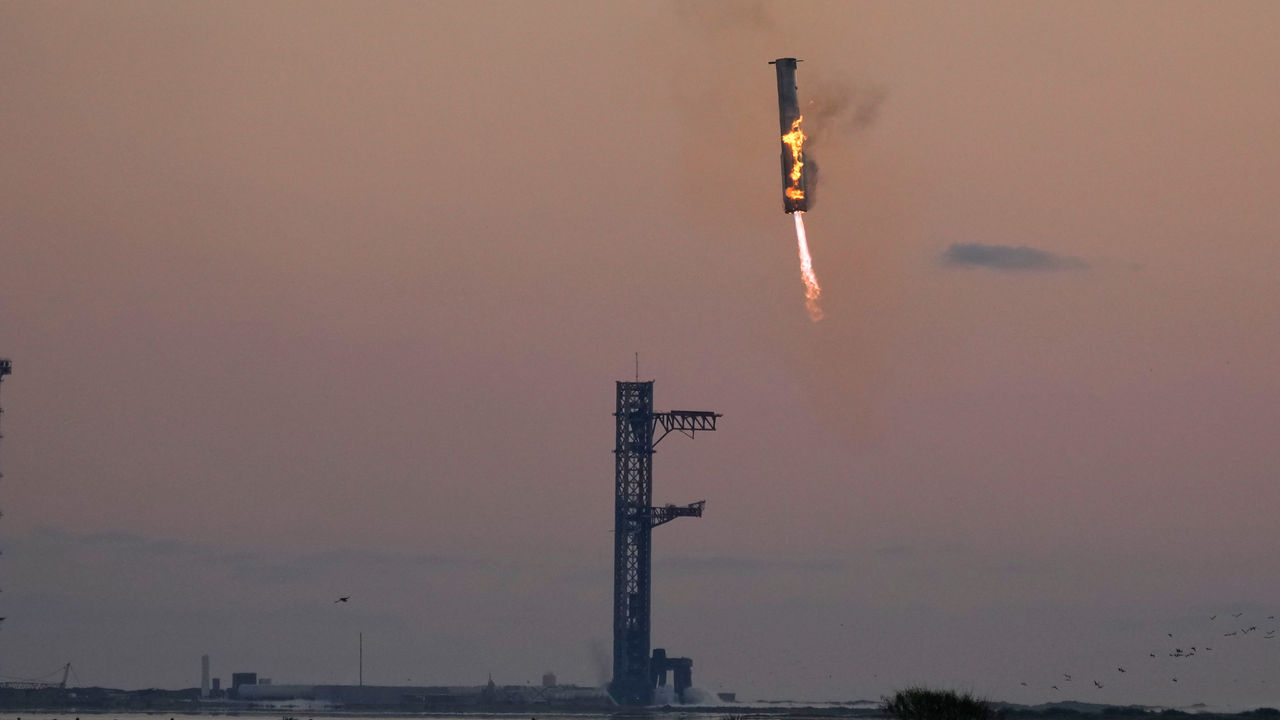Like a Candle in the Wind

Impossible to beat this opening by The Economist:
THE LAUNCH was remarkable: a booster rocket with twice the power of the Apollo programme’s Saturn V lancing into the early-morning sky on a tight, bright column of blue-tinged flame. But that wonder has been seen four times before. It was the landing of the booster stage of SpaceX’s fifth Starship test flight which was truly extraordinary.
Just a kilometre or so above the surface of the Earth, having fallen back from the edge of space, and still travelling at roughly the speed of sound, the 71m-long steel cylinder, bigger than the fuselage of a Boeing 747, relit 13 of its 33 engines. Seconds later, having cut its speed to a couple of hundred kilometres per hour, it turned most of them off, leaving it balanced on the thrust of just three engines like a broom handle on a finger.
Those engines guided it to the 146-metre-tall gantry tower from which, just seven minutes earlier, it had taken off. As the booster slid down past the tower, still at what seemed a slightly worrying angle, the tower’s massive arms closed on it. And so it came to rest, hanging high in the Texas sky, sporadic flames still licking around its base: stranded, a little ungainly and incredible in almost every sense of the word.
The videos of the event, of course, are even more incredible. And inspiring. As always seems to be the case with SpaceX in recent years. For all the buzz AI gets about everything, everywhere, it's easy to overlook the true breakthroughs this company – still a private startup, in name at least – is making before our eyes.
And the cost per tonne of putting that stuff up there should be reduced dramatically. According to an estimate by Citigroup, a bank, SpaceX’s semi-reusable and frequently flown Falcon 9s have already brought down the price of launch by a factor of ten. A much bigger and fully reusable Starship should do at least as much again and possibly much more. It is potentially the biggest leap forward in spaceflight seen since the 1960s.
Last week, following Tesla's "We, Robot" event, I wrote up some thoughts about Elon Musk's often promised (and often missed) timetables, concluding with:
It's 2024, which some will remember as the year Elon Musk said we'd be landing on Mars. Now that's an interesting question: which comes first, Cybercab or Mars?
Given this landing and the window to Mars which opens again in 2026 (thanks to planetary alignment), I don't actually think that's a bet anyone would make right now: amazingly, it sure feels like we're going to get to Mars before we see the Cybercab in operation. That's less a slight on Tesla and again, more about how remarkable Musk's space company is.
I would also just like to reiterate a plea that Musk give up on his failed Xitter experiment and focus his time solely (more at least mostly) to SpaceX. It's perhaps even time to hand off Tesla to someone else to look over and execute on these new plans laid out in autonomy. The future would smile upon such a move, I suspect.

